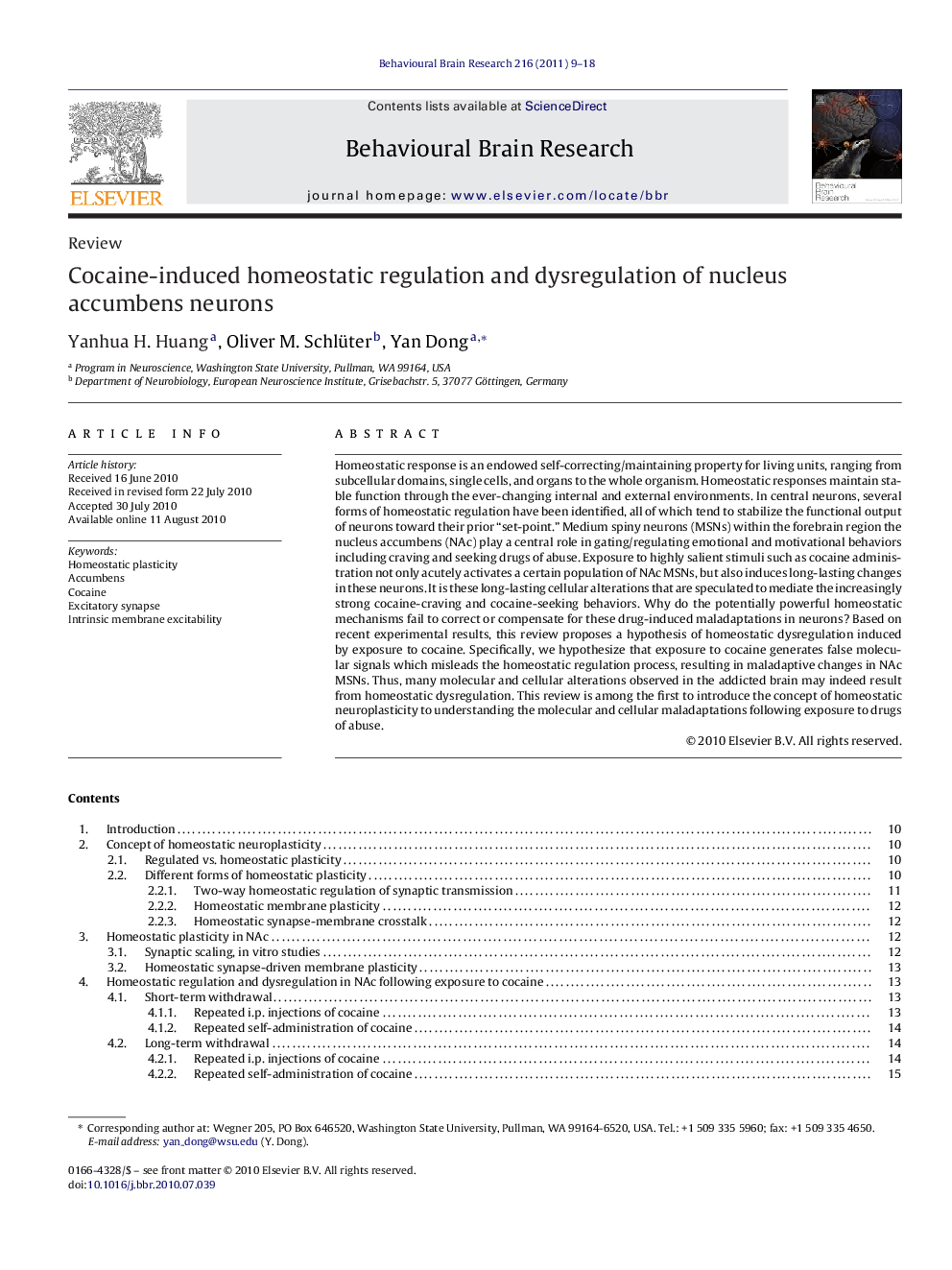| کد مقاله | کد نشریه | سال انتشار | مقاله انگلیسی | نسخه تمام متن |
|---|---|---|---|---|
| 4313975 | 1290020 | 2011 | 10 صفحه PDF | دانلود رایگان |

Homeostatic response is an endowed self-correcting/maintaining property for living units, ranging from subcellular domains, single cells, and organs to the whole organism. Homeostatic responses maintain stable function through the ever-changing internal and external environments. In central neurons, several forms of homeostatic regulation have been identified, all of which tend to stabilize the functional output of neurons toward their prior “set-point.” Medium spiny neurons (MSNs) within the forebrain region the nucleus accumbens (NAc) play a central role in gating/regulating emotional and motivational behaviors including craving and seeking drugs of abuse. Exposure to highly salient stimuli such as cocaine administration not only acutely activates a certain population of NAc MSNs, but also induces long-lasting changes in these neurons. It is these long-lasting cellular alterations that are speculated to mediate the increasingly strong cocaine-craving and cocaine-seeking behaviors. Why do the potentially powerful homeostatic mechanisms fail to correct or compensate for these drug-induced maladaptations in neurons? Based on recent experimental results, this review proposes a hypothesis of homeostatic dysregulation induced by exposure to cocaine. Specifically, we hypothesize that exposure to cocaine generates false molecular signals which misleads the homeostatic regulation process, resulting in maladaptive changes in NAc MSNs. Thus, many molecular and cellular alterations observed in the addicted brain may indeed result from homeostatic dysregulation. This review is among the first to introduce the concept of homeostatic neuroplasticity to understanding the molecular and cellular maladaptations following exposure to drugs of abuse.
Research highlights▶ Cocaine-induced changes in the nucleus accumbens may result from homeostatic regulations. ▶ An early alteration is the appearance of silent synapses enriched in NR2B subunits. ▶ The increased NR2B-NMDA receptors may trigger a homeostatic decrease in membrane excitability. ▶ Newly formed silent synapses provide synaptic slots for recruitment of new AMPA receptors. ▶ The decreased membrane excitability may trigger a homeostatic recruitment of AMPA receptors.Figure optionsDownload high-quality image (47 K)Download as PowerPoint slide
Journal: Behavioural Brain Research - Volume 216, Issue 1, 1 January 2011, Pages 9–18